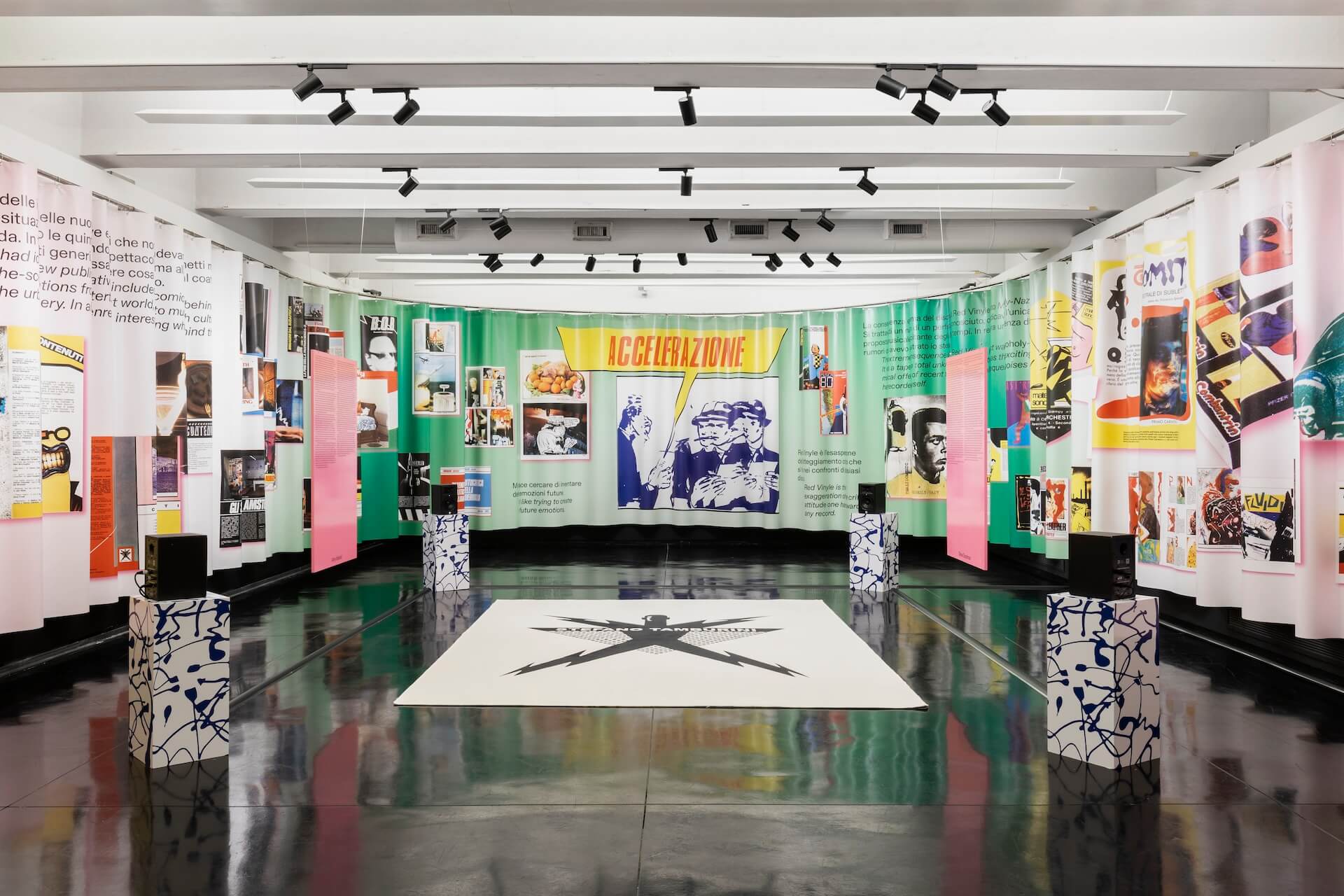
Article written for the exhibition Stefano Tamburini, Accelerazione curated by Matteo Binci and Valerio Mattioli. The exhibition was held at Macro, Museum of Contemporary Art of Rome between March 21 and August 25, 2024. Photo by Agnese Bedini.
Graphic designer, artist, art director, musician, Stefano Tamburini used the word acceleration to define the multi-hyphenate practice that gave birth to Ranxerox, the “synthetic chav”, protagonist of the eponymous comic. Accelerating meant making use of any material, medium or technique available without reverential fear or snobbish scorn, from pinking shears to photocopiers, using dripping as well as collage, referencing Picabia, Warhol, Rotella. Plunging with icy intensity into the semiosphere, scanning the landscape of commodities and, above all, desecrating the cathedrals of culture, which is perhaps the most honest way of approaching the “masters”: thus László Moholy-Nagy, author of Vision in Motion, becomes in a note “Mongoholy-Nagy” (a reference to Devo?).
The “frenzied dynamism” – as Michele Mordente calls it – of the initiator of Cannibale and Frigidaire is a race toward the libidinous accident. Or rather, a flight: his cannibalistic practices are chased by those of a semiopoietic apparatus that, upon computerization, begins feeding on itself at an inhuman pace. The intensity Tamburini directs against the autosemiophagous machine is a death drive. It has the desperate look of Goya’s Saturn Devouring His Son, a desperation stemming from the foreboding of being overtaken.
Now that this has happened, one can easily stumble upon a parody of that painting in Corporate Memphis style, that is, the visual rhetoric – childish and upbeat – of Californian Big Tech, a doubly ironic return of a Mendini-esque carefree postmodernism, compared to which Tamburini’s edgy style appears like a dark twin.
The recombinatory process initiated by the neo-avantgardes and carried on first by Internet swarms with memes and fan art; and then by branding experts and social media managers with easy subversions, is today accelerated by generative artificial intelligence. Services such as Dall-e and Midjourney allow to conjure images by manipulating the world of signs through the net’s privileged medium – writing. In this way, the visual domain, reduced to dataset, is ingested, processed and thus expelled to undergo further chewing. This is known as “model collapse”: a phenomenon whereby AI starts learning from the artifacts it has itself generated. Saturn is never full.
The resulting hypercollage doesn’t only derive from the juxtaposition of shreds of images, but of styles, currents, techniques and pop references. Minimal evolutions follow one another in the feedback loop that binds machine and user, which, in their repetition compulsion, act like Ranxerox, a photocopier turned cyborg, and Lubna, his adored teen junkie. Thus, from a countercultural tactic, plagiarism has became a hegemonic, automatic process.
The words of Red Vinyle sound then haunting: “everything has already been said, what matters is to have an audience that doesn’t remember it.” Yet, the current turbo-acceleration seems devoid of intensity: the sharp frost of Frigidaire still burns, while billions of synthetic images leave us indifferent, irked.